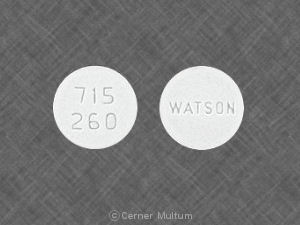Quinine Dosage
Medically reviewed by Drugs.com. Last updated on Mar 25, 2025.
Applies to the following strengths: 260 mg; 324 mg; 325 mg; 200 mg
Usual Adult Dose for:
Usual Pediatric Dose for:
Additional dosage information:
Usual Adult Dose for Malaria
648 mg orally every 8 hours for 7 days
Comments:
- This drug has been effective in geographical regions with documented chloroquine resistance.
Use: Only for treatment of uncomplicated Plasmodium falciparum malaria
US CDC Recommendations: 542 mg base (650 mg sulfate salt) orally 3 times a day for 3 or 7 days
Comments:
- With doxycycline, tetracycline, or clindamycin, recommended as a preferred regimen for treatment of uncomplicated malaria due to chloroquine-resistant (or unknown resistance) P falciparum (or species not identified); in pregnant women, this drug should be used with clindamycin.
- With (primaquine or tafenoquine [Krintafel]) plus (doxycycline or tetracycline), recommended for treatment of uncomplicated malaria due to chloroquine-resistant P vivax; primaquine and tafenoquine must not be used during pregnancy.
- In pregnant women with uncomplicated malaria due to chloroquine-resistant P falciparum or P vivax, doxycycline or tetracycline may be used with this drug if other treatment options are not tolerated/not available and the benefits are deemed to outweigh the risks.
- If needed, as interim therapy for severe malaria until IV artesunate arrives
- The US manufactured quinine sulfate capsule is available in a 324-mg dosage; therefore, 2 capsules should be sufficient for adult dosing.
- Therapy should be continued for 7 days if infection was acquired in Southeast Asia, or for 3 days if acquired elsewhere.
- Current guidelines should be consulted for additional information.
Usual Pediatric Dose for Malaria
16 years or older: 648 mg orally every 8 hours for 7 days
Comments:
- This drug has been effective in geographical regions with documented chloroquine resistance.
Use: Only for treatment of uncomplicated P falciparum malaria
US CDC Recommendations: 8.3 mg base/kg (10 mg sulfate salt/kg) orally 3 times a day for 3 or 7 days
Maximum dose: 542 mg base (650 mg sulfate salt)/dose
Comments:
- With clindamycin in children younger than 8 years and with doxycycline, tetracycline, or clindamycin in children 8 years or older: Recommended as a preferred regimen for treatment of uncomplicated malaria due to chloroquine-resistant (or unknown resistance) P falciparum (or species not identified)
- With primaquine in children younger than 8 years, with primaquine plus (doxycycline or tetracycline) in children 8 to 15 years, and with (primaquine or tafenoquine [Krintafel]) plus (doxycycline or tetracycline) in children 16 years or older: Recommended for treatment of uncomplicated malaria due to chloroquine-resistant P vivax
- If needed, as interim therapy for severe malaria until IV artesunate arrives
- Pediatric dose should never exceed adult dose.
- The US manufactured quinine sulfate capsule is available in a 324-mg dosage; due to the unavailability of non-capsule forms of this drug, pediatric dosing may be difficult.
- Therapy should be continued for 7 days if infection was acquired in Southeast Asia, or for 3 days if acquired elsewhere.
- Current guidelines should be consulted for additional information.
Renal Dose Adjustments
Mild and moderate renal dysfunction: Data not available
Severe chronic renal dysfunction:
- Loading dose: 648 mg orally once followed 12 hours later by maintenance dose
- Maintenance dose: 324 mg orally every 12 hours
Liver Dose Adjustments
Mild or moderate liver dysfunction (Child-Pugh A or B): No adjustment recommended.
Severe liver dysfunction (Child-Pugh C): Not recommended.
Comments:
- Patients with mild or moderate liver dysfunction should be closely monitored for side effects of this drug.
- Alternative therapy recommended for patients with severe liver dysfunction.
Precautions
US BOXED WARNING:
- HEMATOLOGIC REACTIONS: Use of this drug for treatment/prevention of nocturnal leg cramps may lead to serious and life-threatening hematologic reactions (including thrombocytopenia and hemolytic uremic syndrome/thrombotic thrombocytopenic purpura [HUS/TTP]); chronic renal dysfunction associated with TTP development reported. Risk associated with use of this drug (without proof of efficacy for nocturnal leg cramp treatment/prevention) outweighs any potential benefit.
CONTRAINDICATIONS:
- Prolonged QT interval
- Known hypersensitivity reactions to the active component (including, but not limited to, thrombocytopenia, idiopathic thrombocytopenic purpura, thrombotic thrombocytopenic purpura, hemolytic uremic syndrome, blackwater fever)
- Known hypersensitivity to mefloquine or quinidine
- Myasthenia gravis
- Optic neuritis
Safety and efficacy have not been established in patients younger than 16 years.
Consult WARNINGS section for additional precautions.
Dialysis
Data not available
Other Comments
Administration advice:
- Do not use to treat severe/complicated P falciparum malaria, to prevent malaria, or to treat/prevent nocturnal leg cramps.
- Administer with food to minimize gastric upset.
- Do not exceed the prescribed amount.
- Consult the manufacturer product information regarding missed doses.
Storage requirements:
- Store at 20C to 25C (68F to 77F).
- Dispense in a tight container.
General:
- Unless otherwise specified, the dose is expressed as quinine sulfate (i.e., as the salt).
- The Medication Guide should be dispensed to each patient.
Monitoring:
- General: For side effects in patients with liver dysfunction; serum digoxin levels (if used concomitantly)
- Metabolic: For signs/symptoms of hypoglycemia
Patient advice:
- Read the US FDA-approved patient labeling (Medication Guide).
- Do not take more than the prescribed amount.
More about quinine
- Check interactions
- Compare alternatives
- Pricing & coupons
- Reviews (20)
- Drug images
- Side effects
- During pregnancy
- Drug class: antimalarial quinolines
- Breastfeeding
- En español
Patient resources
Other brands
Professional resources
Other brands
Related treatment guides
Further information
Always consult your healthcare provider to ensure the information displayed on this page applies to your personal circumstances.


